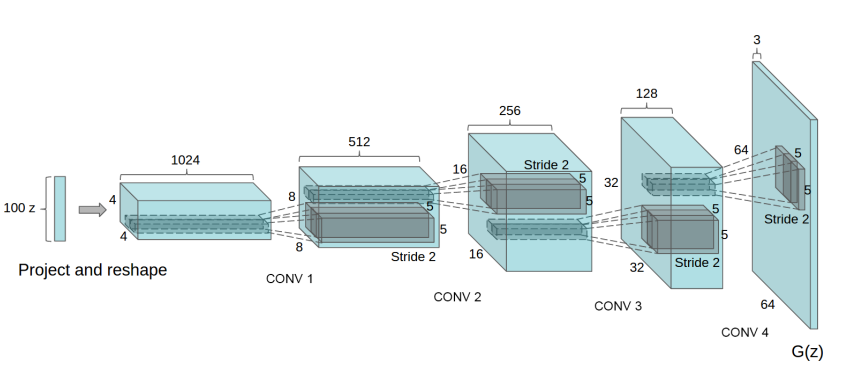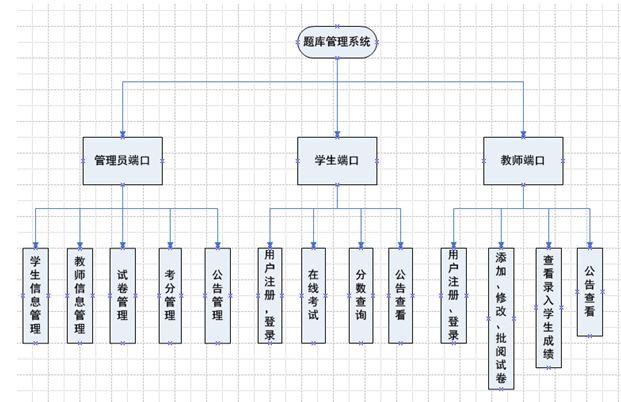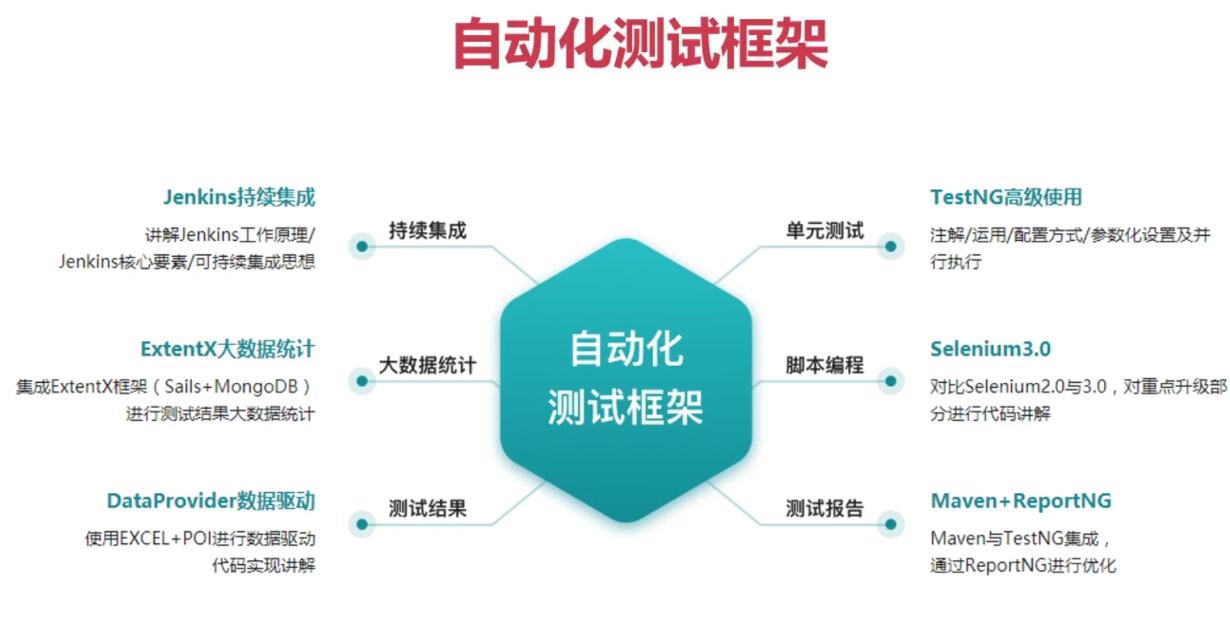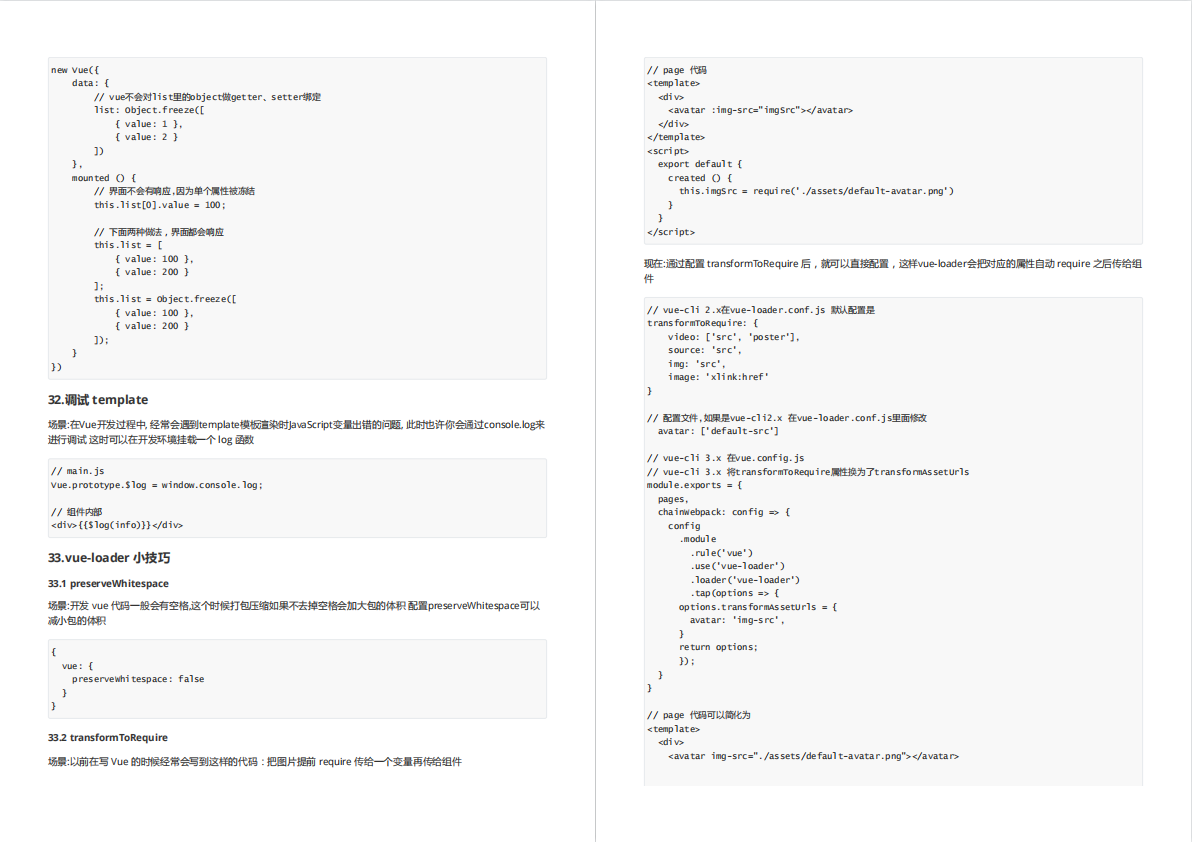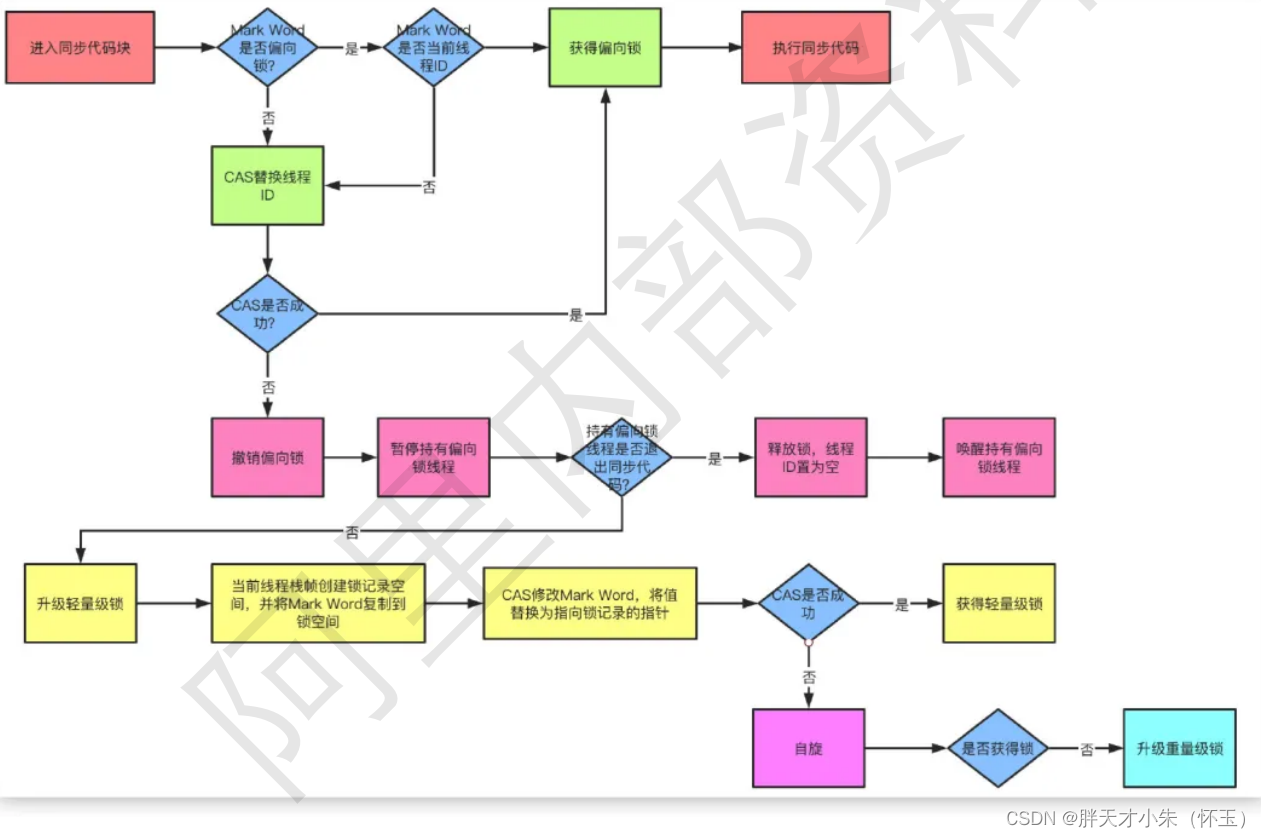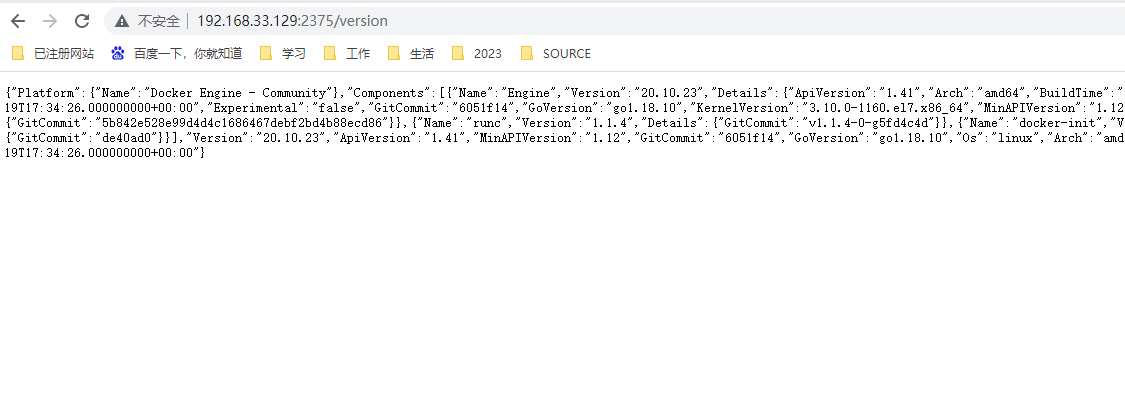目录
1.什么是装饰器模式
2.装饰器模式优缺点
3.装饰器模式结构
4.代码示例
1.什么是装饰器模式
装饰器模式,指在不改变原有对象结构的基础情况下,动态地给该对象增加一些额外功能的职责。装饰器模式相比生成子类更加灵活。它属于对象结构型模式。
装饰器模式强调自身功能的扩展,是代理模式的一个特殊应用。
简单来说,就是一个物件,然后不断在该物件上添加符合该物件的功能,进行扩展。
以生活中的例子为例:
我们点一个快餐,然后炒饭是快餐中的一种。我们以该炒饭为对象物件,在其中加蛋、加肉、加火腿等等(即进行扩展),使得炒饭变得更加美味(功能强大)。
装饰器模式的目标是使用组合关系来创建一个包装对象(即装饰对象)来包裹真实对象,并在保持真实对象的类结构不变的前提下,为其提供额外的功能。
2.装饰器模式优缺点
装饰器模式的主要优缺点有:
- 装饰器模式可拓展性强,在不改变原有对象的情况下,动态的给一个对象扩展功能,即插即用。同时,易于维护,哪个功能出问题直接找相关代码即可。
- 通过使用不用装饰类及这些装饰类的排列组合,可以实现不同效果。
- 装饰器模式会增加许多子类,会使得代码变得繁多增加程序的复杂性。
3.装饰器模式结构
装饰器模式主要包含以下角色。
- 抽象构件(Component):定义一个抽象接口以规范准备接收附加责任的对象。
- 具体构件(ConcreteComponent)角色:实现抽象构件,通过装饰角色为其添加一些职责。
- 抽象装饰(Decorator):继承抽象构件,并包含具体构件的实例,可以通过其子类扩展具体构件的功能。
- 具体装饰(ConcreteDecorator):实现抽象装饰的相关方法,并给具体构件对象添加附加的责任。
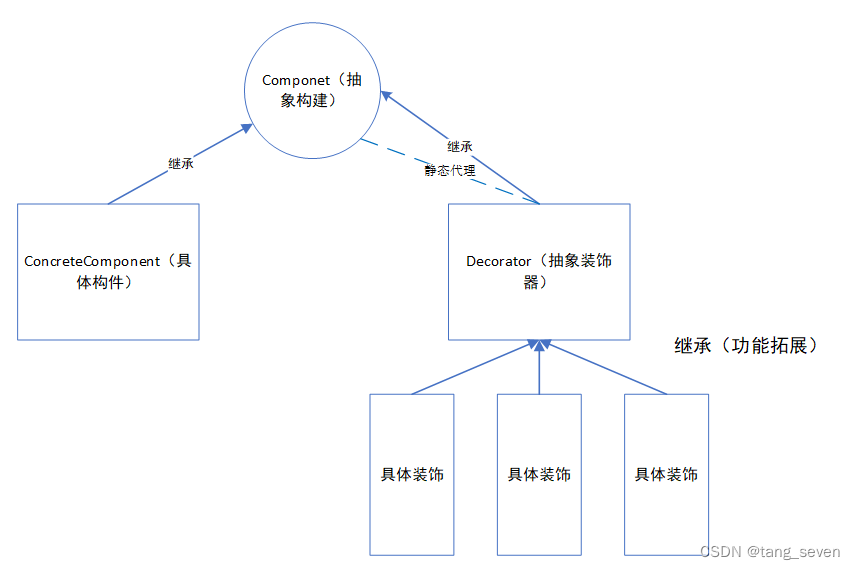
所以如上图所示,首先需要有一个Component,规定类别、行为。然后需要有一个ConcreteComponent继承该Component,并规定为具体的物件。接着是一个Decorator,同样继承该Component,同时在该类中传入Component对象进行静态代理。最后是多个ConcreteDecorator继承自Decorator,实现功能的拓展。
4.代码示例
下面是装饰器的应用示例,以圣诞树为例:
1)创建Component对象,规定为Tree,行为功能为输出名字和输出价格:
public abstract class Tree {
protected abstract String getMessage();
protected abstract int getPrice();
}2)创建ConcreteComponent,规定为圣诞树:
public class ChristmasTree extends Tree{
@Override
protected String getMessage() {
return "这是一颗圣诞树";
}
@Override
protected int getPrice() {
return 50;
}
}3)创建Decorator对象,进行静态代理
public abstract class ChristmasTreeDecorator extends Tree{
//静态代理
private final Tree tree;
public ChristmasTreeDecorator(Tree tree){
this.tree=tree;
}
@Override
protected String getMessage() {
return this.tree.getMessage();
}
@Override
protected int getPrice() {
return this.tree.getPrice();
}
}4)创建多个ConcreteDecorator对象,实现功能扩展(加装饰球、加缎带)
public class BallDecorator extends ChristmasTreeDecorator{
public BallDecorator(Tree tree) {
super(tree);
}
@Override
protected String getMessage() {
return super.getMessage()+ ", 加了装饰球";
}
@Override
protected int getPrice() {
return super.getPrice()+20;
}
}public class RibbonDecorator extends ChristmasTreeDecorator{
public RibbonDecorator(Tree tree) {
super(tree);
}
@Override
protected String getMessage() {
return super.getMessage()+ ", 加了缎带";
}
@Override
protected int getPrice() {
return super.getPrice()+10;
}
}5)最后,进行测试:
public class test {
public static void main(String[] args) {
System.out.println("===来一棵圣诞树===");
Tree christmasTree = new ChristmasTree();
System.out.println(christmasTree.getMessage() + ",总价格:" + christmasTree.getPrice() + "元。");
System.out.println("===加些圣诞球吧===");
christmasTree = new BallDecorator(christmasTree);
System.out.println(christmasTree.getMessage() + ",总价格:" + christmasTree.getPrice() + "元。");
System.out.println("===再加些缎带吧===");
christmasTree = new RibbonDecorator(christmasTree);
System.out.println(christmasTree.getMessage() + ",总价格:" + christmasTree.getPrice() + "元。");
}
}输出结果:
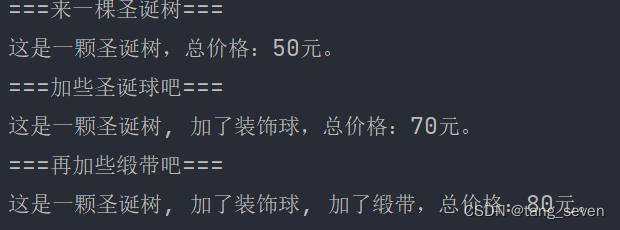
成功根据需求,获取到了一棵加了装饰球和缎带的圣诞树,并计算出价格。
